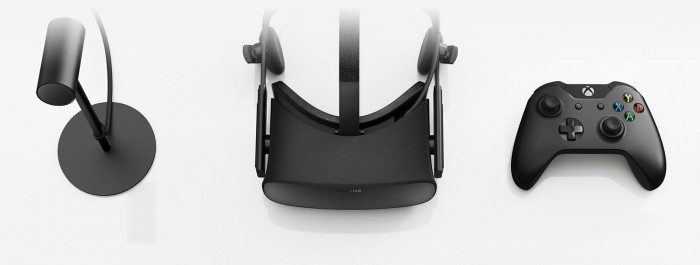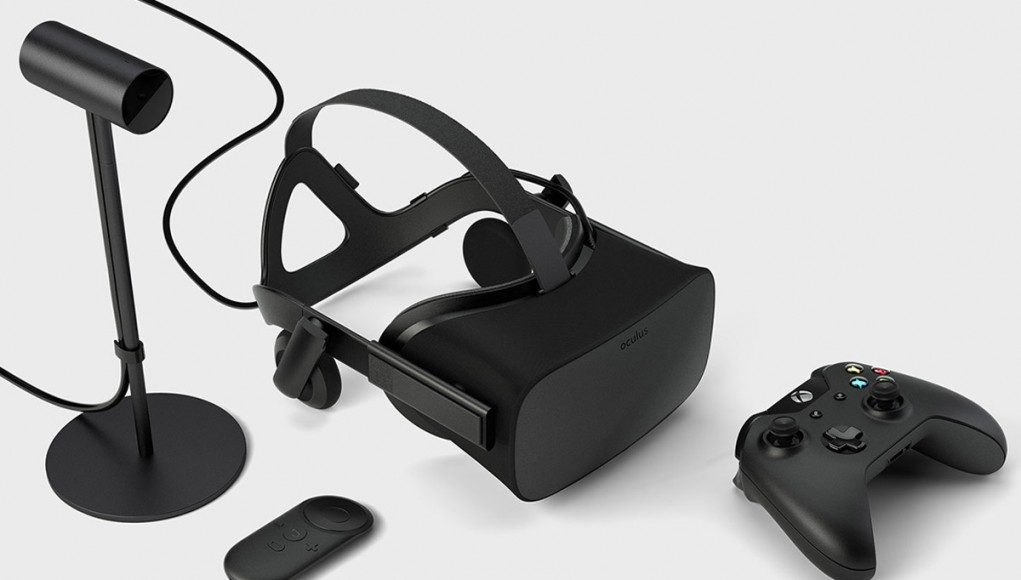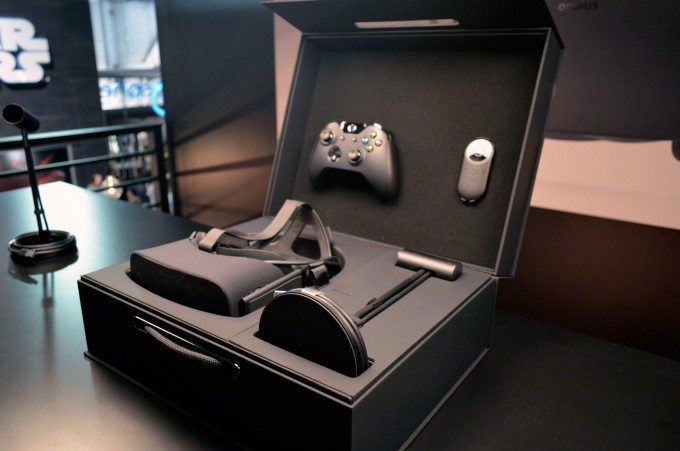Xbox One Controller and Wireless Receiver
 According to Luckey, “The Xbox controller costs us almost nothing to bundle, and people can easily resell it for profit.” However, having it included in the retail package is important. Luckey has stated time and again that, although VR specific motion controllers like the Oculus Touch will eventually represent the optimal immersive input method for VR, right now most titles – some years in development – have been built for an Xbox controller from the very beginning.
According to Luckey, “The Xbox controller costs us almost nothing to bundle, and people can easily resell it for profit.” However, having it included in the retail package is important. Luckey has stated time and again that, although VR specific motion controllers like the Oculus Touch will eventually represent the optimal immersive input method for VR, right now most titles – some years in development – have been built for an Xbox controller from the very beginning.
Giving every Oculus Rift user the base controller for the first rush of titles means developers don’t have to worry about 3rd party controllers, concentrating instead on developing great content.
The Oculus Remote
Using technology cribbed from Oculus’ co-engineered mobile headset Samsung’s Gear VR, the Oculus Remote is a diminutive, sleek control device designed to “make it simple and intuitive to navigate VR experiences,” – according to Oculus.
It’s a simple device with an integrated battery (with life up to 4000 hours in use battery life) which includes a swipe-able touchpad, ‘plus’, ‘minus’ back and ‘home’ buttons, all embossed for ease of use)—but don’t mistake it for a Wiimote or other motion-based controller, because as Luckey put it in a recent Reddit AMA: “No gyro. It is essentially the input set of Gear VR made into a remote…”
Two Bundled Games
Lucky’s Tale: Challenging the early assumption that immersive VR experiences should be played from the first perspective, Lucky’s Tale from Playful Corp has repeatedly proven to be a fun and compelling 3D platformer.
It could be argued that the gameplay is strongly derivative of classics in the genre, but the gameplay we’ve experiences is fluid and tight and the mechanic placing you in the virtual world as a camera, free to explore the environment around Lucky, hunting for secrets in an intuitive fashion, is both engaging and not as disconnecting as you may think. We simply haven’t played enough Lucky’s Tale to speak to it’s longevity or overall success as a VR launch title, but as a counterpoint to its fellow pack-in title EVE: Valkyrie, it’s a fresh introduction to virtual reality.
EVE: Valkyrie: Born from years of development, following the evolution of the VR industry, Road to VR’s Paul James described the title, after a recent set of extensive playtests as “the launch title that the Oculus Rift, and by turns virtual reality in general, deserves.
A focused, well balanced, accessible and addictive title that provides a surprisingly comfortable way for users not yet used to gameplay inside a VR headset.” A multiplayer, online space shooter, EVE: Valkyrie may not be to everyone’s tastes, but it feels like a labor of love and feedback from people who’ve been participating in the recent Alpha’s is very good indeed. It’s a comfortable VR experience that leverages gaze mechanics unique to the format to elevate the experience from the standard 2D realm.
See Also: Oculus Plans to Have Rift Demo Stations in Retail Stores for Consumer Launch
Cool Carrying Case
The DK1, provided as a reward for backers in Oculus’ 2012 Kickstarter campaign and packaged inside a fairly sturdy, plastic carry-case, spoke to the headset’s original premise – a development kit to aid transporting the developer kit headset from meeting to meeting in order to more easily demo content. When the second developer kit arrived in 2014, the carry case was sorely missed by some. With the final consumer release, it’s back and in Oculus founder Palmer Luckey’s words “doper than ever”.
Magnetic latches, fine matte finish, all the space for your VR doodads – we’ll be happy if it can stand up to the abuse of the occasional drop and can fit in an airplane overhead bin. Check out more on our up close and personal look with the carrying case to find out more.











